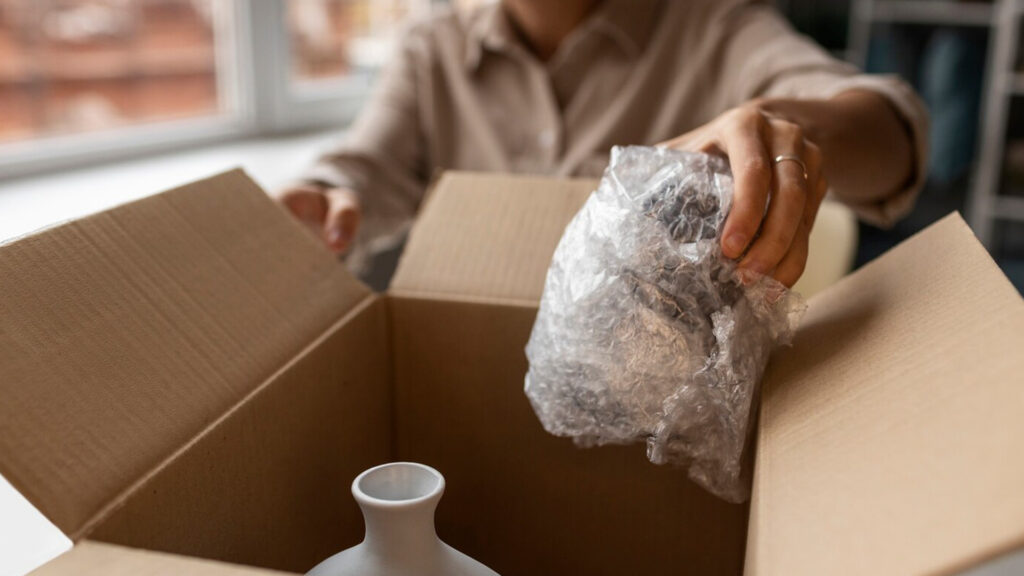When it comes to exporting goods, ensuring the safety of fragile items is crucial. The process of packing fragile items for export requires careful planning and execution to prevent damage during transit. Whether you’re a small business owner shipping products internationally or an individual sending a fragile gift to a loved one abroad, this guide will walk you through the essential steps to secure your items effectively.
Understand the Importance of Proper Packing
Packing fragile items for export isn’t just about wrapping them in layers of bubble wrap. It’s a process that ensures your goods arrive at their destination in the same condition they left. Proper packing safeguards your items against international shipping, including handling, stacking, and environmental factors like humidity and temperature changes.
Choose the Right Materials
Choosing the correct materials is vital when it comes to proper packing. Here’s what John Pipe recommends:
Selecting the Best Box
The first step in packing fragile items is choosing the right box. Opt for a new, sturdy, double-walled cardboard box that’s slightly larger than your item, allowing space for ample cushioning material. The strength of the box is crucial to withstand pressure and prevent collapse.
Cushioning and Protective Materials
Use high-quality cushioning materials such as bubble wrap, foam inserts, or packing peanuts to surround your item completely. These materials absorb shock and keep your item snugly in place, minimising movement inside the box.
Packing Your Fragile Item
Safe packing is crucial when it comes to a fragile item. In the following section, we will go over how you can ensure safety for your package.
Wrapping the Item
Begin by wrapping your item in bubble wrap, ensuring all sides are covered and protected. Use tape to secure the bubble wrap, but avoid placing tape directly on the item to prevent damage to its surface.
Securing the Item in the Box
After wrapping, place your item in the centre of the box, surrounded by a generous layer of cushioning material. The goal is to prevent any direct contact between your item and the box walls. Fill any gaps with additional cushioning to avoid movement during transit.
Closing and Sealing the Box
Once your item is securely nestled within its cushioned environment, close the box and seal it with heavy-duty packing tape. Ensure all seams and edges are taped to reinforce the box’s structure and prevent opening during handling.
Labelling Your Package
Accurate labelling is essential for the safe transportation of your fragile item. Besides the shipping address, clearly mark the box with “Fragile Package” and “Handle with Care” labels on multiple sides to alert handlers to the delicate nature of your package. If your item has a specific orientation, use “This Way Up” labels to indicate how the box should be carried and stored.
Preparing for Customs
When exporting items, you’ll need to complete the necessary customs documentation, including a detailed description of the item and its value. This step is crucial to ensure a smooth customs clearance process. Be honest and accurate in your documentation to avoid delays or penalties.
Choosing a Reliable Shipping Partner
Selecting a reputable shipping partner with experience in handling fragile items is vital. Look for carriers that offer specialised services for fragile goods, including insured shipping options. A reliable partner will have a track record of safely delivering delicate items to their destination.
How John Pipe International Can Help
At John Pipe International, we understand the complexities of packing fragile items for export. With over 60 years of experience, we offer bespoke packing and freight solutions tailored to your specific needs. Our team of experts is equipped to handle the logistics of your project, ensuring your fragile items are packed, documented, and shipped with the utmost care. From custom packing designs to comprehensive export documentation, we’ve got you covered.
If you’re looking for a partner to help navigate the challenges of exporting fragile items, reach out to us. We’re here to provide the expert support and services you need to ensure your goods arrive safely and on time, no matter their destination.
Exporting fragile items doesn’t have to be a daunting task. With the right preparation, materials, and support from experienced professionals like John Pipe International, you can ship your fragile goods with confidence. Follow these steps to pack your items securely and reach out to us for expert packing and freight solutions tailored to your needs.
FAQs
Q: How do I use fragile parcel tape effectively for secure packaging?
A: When using fragile parcel tape, ensure the tape covers both the top and bottom seams of your box in a ‘H’ shape pattern. This reinforces the box’s structure and highlights the contents as delicate.
Q: What types of fragile packaging materials are best for protecting items during shipment?
A: The best fragile packaging materials for safeguarding items include bubble wrap, packing peanuts, and corrugated cardboard dividers.
Q: What are the best practices for preparing to ship fragile items internationally?
A: When preparing to ship fragile items internationally, start by selecting a sturdy box that fits the item snugly. Use adequate fragile packaging materials to wrap and cushion the item, ensuring there are no loose spaces inside the box.

